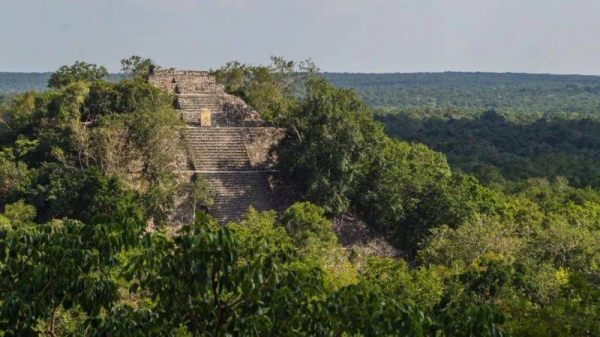A significant discovery has been made in Mexico, with archaeologists uncovering a large Mayan city that had been hidden under jungle vegetation for centuries. The city, named Valeriana, was found using Lidar technology, revealing pyramids, sports fields, causeways, and amphitheaters. The size of the city is comparable to that of Edinburgh, Scotland, and it is believed to have been home to 30-50,000 people at its peak from 750 to 850 AD. The discovery challenges the notion that the Tropics were where civilizations went to die, highlighting the rich and complex cultures that once thrived in the region.
The find of the city of Valeriana sheds light on the history of the Maya civilization and contradicts the idea that the Tropics were devoid of advanced civilizations. The city, hidden in plain sight near a major road, was likely abandoned due to factors such as climate change and possible warfare with Spanish invaders in the 16th century. The discovery was made “by accident” by archaeologist Luke Auld-Thomas, who stumbled upon radar survey data while browsing the internet. The findings suggest that the landscape was densely populated and that the Maya civilization faced challenges in adapting to climate issues.
The use of Lidar technology has revolutionized archaeology by allowing researchers to survey areas covered in vegetation and uncover hidden structures. This technology has enabled archaeologists to map vast areas in a fraction of the time it would take using traditional methods. The discovery of Valeriana and other Maya sites highlights the importance of technological advancements in uncovering lost civilizations and expanding our understanding of the past. Elizabeth Graham, a professor from University College London, emphasizes that the landscape was once settled by complex cities and towns, challenging the perception of the region as uninhabited or “wild.”
The research conducted by Auld-Thomas and his colleagues supports the idea that Maya civilization collapsed due to the dense population and inability to adapt to changing environmental conditions. The city of Valeriana, with its extensive network of buildings and infrastructure, provides valuable insights into the complexity of Maya urban centers. The discovery of hidden treasures, such as jade masks, and evidence of ancient rituals and sports activities further enriches our understanding of Maya culture. The study published in the journal Antiquity underscores the significance of ongoing research in uncovering new archaeological sites and preserving the cultural heritage of ancient civilizations.
Overall, the discovery of the lost Mayan city of Valeriana in Mexico represents a significant breakthrough in archaeology, showcasing the advanced urban centers that once thrived in the region. The use of Lidar technology has played a crucial role in uncovering hidden structures and expanding our knowledge of past civilizations. The findings highlight the challenges faced by the Maya civilization, including climate change and external threats, which ultimately led to the abandonment of urban centers. As technology continues to advance, archaeologists have the opportunity to explore and preserve the rich cultural heritage left behind by ancient civilizations like the Maya.











